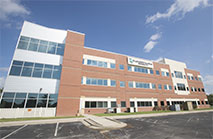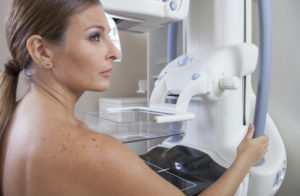Upper GI Pain and Imaging
 Ever wondered what happens when you swallow or what your stomach looks like? Upper GI (gastrointestinal) and esophagrams are both tests used to assess the first part of the gastrointestinal system and can be used to answer these questions and much more. Here we will address what is commonly called a “UGI” (upper gastrointestinal) exam. For more details on esophagrams specifically, please click here. Why would you need one of these tests? These exams may be used for a variety of symptoms including but not limited to:
Ever wondered what happens when you swallow or what your stomach looks like? Upper GI (gastrointestinal) and esophagrams are both tests used to assess the first part of the gastrointestinal system and can be used to answer these questions and much more. Here we will address what is commonly called a “UGI” (upper gastrointestinal) exam. For more details on esophagrams specifically, please click here. Why would you need one of these tests? These exams may be used for a variety of symptoms including but not limited to:
- Abdominal pain
- Epigastric pain
- Heartburn or other symptoms of reflux disease including chest pain or discomfort, a burning sensation, or excessive burping; more unusual symptoms of reflux can include sinusitis, anosmia (loss of smell), aspiration, and chronic cough.
- Trouble swallowing
- Choking
- Vomiting
- Blood in stools
- Ulcers
Prior to the study: It is very important that a patient coming in for an upper GI imaging procedure not eat or drink anything after midnight the day before the exam. In order to look at the structures and anatomy, the stomach and esophagus must be empty. Even a small amount of water can keep the contrast material from coating and sticking to the lining of the structures which would limit what the radiologist can see. Due to radiation exposure UGI imaging is not used in women who are or may be pregnant. It is okay to eat and drink before an esophagram.
You will change into a gown, removing all clothing that has metal. We don’t want metal buttons, zippers or underwires hiding any of your lovely GI structures! How are the tests done? For an UGI we start with a preliminary x-ray or image of the abdomen- this makes sure there is no blockage before we begin the test. In order to optimally see your GI tract on x-ray using fluoroscopy, we have to give you a contrast material by mouth. General GI imaging can be done with contrast material such as barium and crystals of gas – the barium lines the esophagus (the connection from the mouth to the stomach) and the stomach; the crystals create gas which expands the organs, allowing radiologists to beautifully see the mucosal lining.
The contrast travels thru the pharynx, esophagus, stomach and duodenum; observing real-time with fluoroscopy allows us to see function as well as anatomy.
Images are obtained of all parts of the upper GI tract, usually starting with you positioned upright and then horizontal. fluoroscopy allows a real time look at what is happening. X-ray images are also recorded for better detail. For an esophagram, we focus on the pharynx and esophagus only, using oral contrast agents, gas and sometimes foods like crackers coated with barium paste. What can be found using these tests?
- masses- anywhere along the upper GI tract; these can be benign like polyps or cancerous;
- ulcers (gastric or duodenal);
- hiatal hernia (a condition where the stomach is positioned above the diaphragm predisposing to reflux disease and it’s complications like Barrett’s esophagus which is a pre-cancerous condition; this is one of the reasons to not ignore your reflux symptoms!);
- reflux -we can see the barium going from the stomach back up into the esophagus- we will try different positions and maneuvers to try to elicit reflux;
- esophagitis or gastritis-conditions of inflammation from many different causes;
- congenital abnormalities-sometimes the upper GI tract is not connected normally or there may be congenital cysts or masses along the upper GI tract;
- motility disorders- most often of the esophagus; imaging real-time allows us to see how your upper GI tract is functioning
- swallowing disorders
What happens after the test? The radiologist may be able to discuss some of your results at the end of the test. A final report will be made by your radiologist after reviewing all of the images, with the official report going to your doctor. We will ask that you drink lots of fluids to help flush the barium out of the system! (Besides, drinking water is good for you no matter what!). You can resume your normal diet immediately. Upper GI exams can result in amazing images and can be a key to diagnosis of a wide variety of conditions. Seeing your body in action helps us keep you on the road to your best possible health!
Originally published 7/16/14 on diagnosticimagingcenterskc.com.





